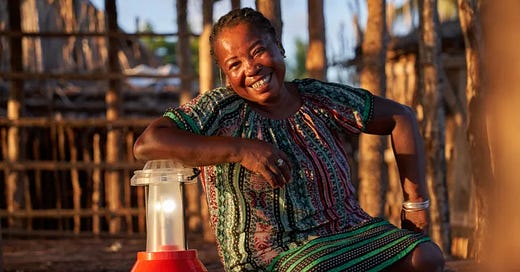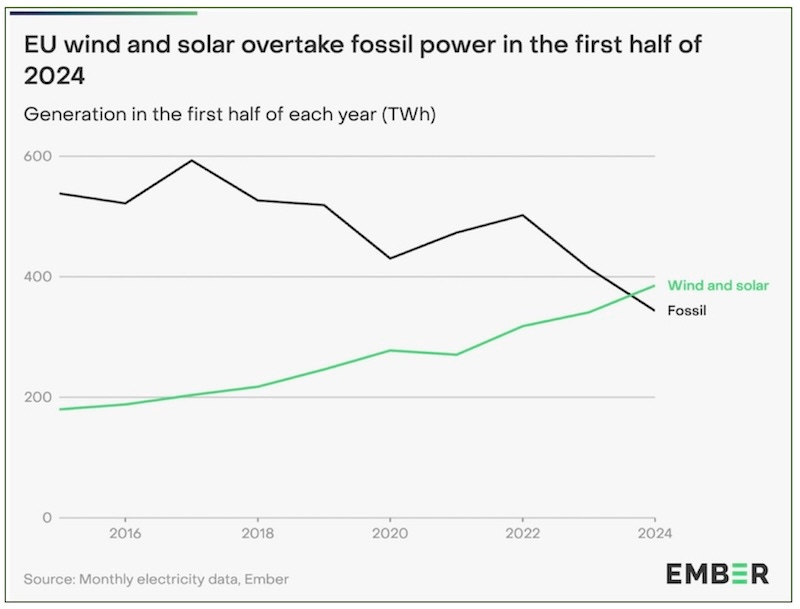Rural Women Learn Solar Skills, Build Community with ‘Bottom Up Development’
Barefoot College in India works with the practical wisdom and survival skills of the rural poor. Literacy skills not required.
This week’s guest post comes to you from Rosemary Cairns, a former journalist and editor, facilitator, and publisher of the Seeing like a local newsletter.
I remember the first time I fully grasped what it was like to live without light. People in Democratic Republic of Congo, with whom I was working, were driving me back to the hotel in Beni. We drove by villages where the only light was a fire in front of the house.
Apart from all the things people can’t do when there is no indoor light, I could only imagine how terrifying it would be when armed men swooped down in the middle of the night after the fires were out—as they often did.
In Beni itself, the hotel only had diesel-generated power for five hours at night, and when I checked in, they gave me a candle to use when the power went out at 11 p.m. (As it did—on the dot.)
So when I first read about the Barefoot Solar Mamas, I grasped just how powerful it was to train older women to solar electrify their villages, bringing light that allowed women to cook and students to study. Later, in Sri Lanka, I saw street markets that used solar lights, making it possible for people to buy and sell food when it was dark, after a day’s work.
What was even more amazing to me was that the Barefoot College had found a practical, non-language-based way for illiterate older women who spoke many different languages to learn these skills.
A Totally Different Approach
And, having learned the skills, the women solar electrified their villages while creating a job for themselves. Villagers who no longer had to buy kerosene for lamps willingly paid the women to maintain the solar lights. The women also learned to make solar spinning wheels, solar hot water heaters, and solar cookers. It was a totally different approach to development, and it works.
After completing the six months’ training in India, Stella, a grandmother from a small village in Malawi who had never been away from home, said: “I never imagined that technical knowledge like this would be open to women who were illiterates, like us. But coming to Tilonia has given us this confidence that we can learn about new things and make our lives better.”
The women are the ambassadors of a completely different kind of education—“a hands-on learning-by-doing process of gaining practical knowledge and skills rather than written tests and paper-based qualifications.” The focus is on strengthening ”the kind of education one absorbs from family, community, and personal experience” with the goal of providing vital services to one’s community—thus giving people a way to earn a living at home, rather than migrating to a city where they may find themselves living in a slum without work.
Barefoot College believes the very poor have every right to control, manage, and own the most sophisticated of technologies to improve their own lives. Just because they cannot read and write, the College says, there is no reason that very poor women cannot be water and solar engineers, designers, communicators, midwives, architects, and rural social entrepreneurs. Or teachers—the women are taught by unschooled Indian women who have learned to train others in the skills they acquired through ‘learning by doing’.
Unlearning
It is a reflection of a completely different way to ‘do development’, as Bunker Roy explained in 2008: “As an organization, Barefoot College is the only college in India that follows the lifestyle and work style of Gandhi. It is the only college built by the poor, for the poor, and for the last 35 years, managed, controlled, and owned by the poor. Underlying the Barefoot approach is a firm belief in the knowledge, creativity, practical wisdom, and survival skills of the rural poor—possibly the only answer to making communities self reliant and sustainable. For an unemployed and unemployable, semi-literate rural youth to be providing vital services in a village, replacing an urban, paper-qualified doctor, teacher, or water engineer, is a totally revolutionary idea. And yet, this is what happens at the Barefoot College every day.”
Bunker Roy, who founded Barefoot College in 1972, grew up in a wealthy Indian family which was bemused when he said he wanted to address poverty and inequality. Village elders in Tilonia, suspicious at first, gave him good advice—if he really wanted to work with the poor who lived on less than a dollar a day, avoid those with degrees and certificates. Work with the skills of the village people instead.
He has described the process he went through this way: “For me, living and working in the villages for five years as an unskilled laborer digging and blasting wells and meeting with very ordinary poor people was an extraordinary experience. Between 1967 and 1971, I went through an ‘unlearning’ process that provided the seeds for the humble beginning of the Barefoot College. Over the last 35 years, what we have ‘unlearned’ is our gross underestimation of people’s infinite capacity to identify and solve their own problems with their own creativity and skills, and to depend on each other in tackling problems. What I learned is that empowerment is about developing that capacity to solve problems, to make choices, and to have the confidence to act on them.”
Working With Peoples’ Skills
And so he designed a college that worked entirely with the skills and knowledge of illiterate village people. It is what he calls ‘bottom up development’, and it reverses migration to cities, draws people back from slums, and incorporates existing village skills. It is a rural solution to a rural problem, creating jobs in villages, and it focuses on working with women rather than men. It is a partnership model that works with the community. And it works beautifully, as you can see in this amazing TED talk he delivered in Edinburgh in 2011.
Not only does it train grandmothers, it reflects and shares a sustainable way of life that is in harmony with the environment. Cooking is done with solar cookers, the campus is entirely powered by solar power, rainfall is harvested from roofs and stored in an underground tank, and the once-dry and arid campus is now an oasis of green. Children who care for animals during the day learn in night schools and elect their own prime minister and cabinet to direct the school’s work.
Barefoot College lives its values, and has proven its model works. The only puzzle for me has been—why is this model not more widely used worldwide?
Especially when we know that narrowing the global gender gap could be a huge booster to global GDP growth. McKinsey Global Institute found that advancing gender equality could add $13 trillion to global GDP in 2030.
Read more of Rosemary Cairns’ posts here.
Chart of the Week
Carbon Price Rollback Emerges as Key Voting Issue as Federal Election Approaches
Pricing Pollution the ‘Key Ingredient’ in Successful Climate Action, Global Study Finds
Ontario’s ‘Clean Energy Superpower’ Plan Puts Nuclear Ahead of Least-Cost Options, Analysts Warn
Canada May Lose Out as Fossil Companies Alienate Investors on Sustainability Standards
Climate Change Made High Temperatures Twice as Likely Before Jasper Wildfire
Wildfire Smoke Increases Dementia Risk, 10-Year Study Shows
California Hits 100% Renewables for (Parts of) 100 Days Straight
SBTi Declares Carbon Credits ‘Ineffective’ in Sweeping Review
Human-caused climate change made this summer's heat waves 2-10 times more likely: ECCC (CTV News)
Floodwaters washed away the only road out, so this Quebec city set up an emergency water taxi (Canadian Broadcasting Corporation)
Vancouver narrowly dodged a fire disaster. But nowhere is truly safe (Globe and Mail)
This startup aims to decarbonize big buildings without hassling tenants (Canary Media)
How a Microgrid Battery Weighing as Much as 3 Elephants Stopped Factory's Baked Goods From Burning (Microgrid Knowledge)
British energy giant Drax reports violating toxic pollutant limits at Louisiana wood pellet facilities (The Associated Press)
How the Marshall Fire sparked a political transformation in Colorado (Grist)
Musk Pitches EVs to Fans of Trump (Bloomberg)
Canada’s seat-of-the-pants response to disaster management isn’t working (Globe and Mail)
She’s Fighting Big Oil in Texas. But Republicans Want to Make Her D.A. (New York Times)
Plans unveiled for five gigawatt wind project, the biggest on Australia’s main grid (RenewEconomy)
China’s Top Utility Completes World’s Biggest Pumped Hydro Plant (Bloomberg)








